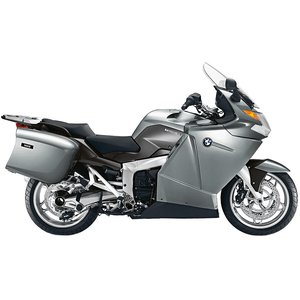BMW K 1200 GT (2006–2008): A Sport-Touring Powerhouse Revisited 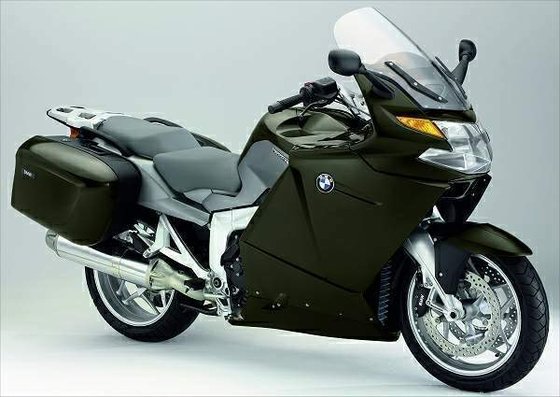
When BMW introduced the K 1200 GT in 2006, it wasn’t just launching another touring motorcycle—it was redefining what a sport-touring machine could be. Built on the foundation of the K 1200 S supersport platform, the GT blended long-distance comfort with exhilarating performance, all wrapped in BMW’s signature engineering precision. After spending a week with this Bavarian marvel, it’s clear why it remains a cult favorite among riders who refuse to compromise between adrenaline and endurance.
Design & Ergonomics: Form Meets Functionality 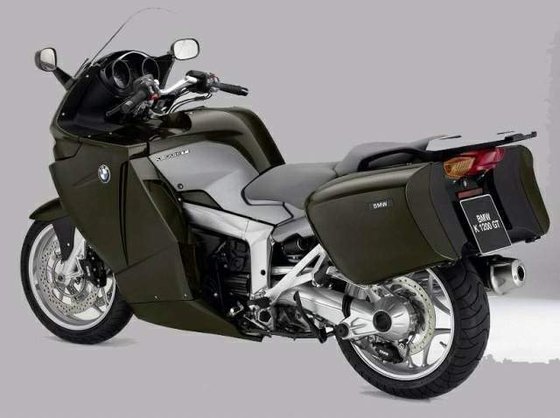
The K 1200 GT’s design language screams “purpose.” Its aggressive front fairing, borrowed from the K 1200 S, houses a twin-headlight setup that’s both iconic and functional. The 24-liter (6.3-gallon) fuel tank flows into angular side panels, while color-matched hard cases (standard equipment) add practicality without sacrificing aesthetics. Available in Deep Blue Metallic, Dark Graphite Metallic, and Crystal Gray Metallic, the GT looks as at home in a Monaco parking lot as it does on a Alpine pass.
Adjustability Is King
BMW’s obsession with customization shines here: - Seat height: Ranges from 820–840 mm (32.3–33.1 in), with an optional low seat dropping to 800 mm (31.5 in). - Handlebar position: 30 mm of vertical adjustment to accommodate different rider builds. - Windscreen: A manually adjustable shield that towers over competitors’ offerings. At its highest setting, it deflects windblast so effectively that you’ll forget you’re riding at 160 km/h (100 mph).
The riding position strikes a near-perfect balance—slight forward lean to the wide bars keeps wrists happy, while the sculpted seat (heated on higher specs) supports 8-hour days in the saddle. Pillion accommodations are generous by sport-touring standards, though your passenger might still envy the rider’s throne.
Engine & Performance: The Heart of a Supersport 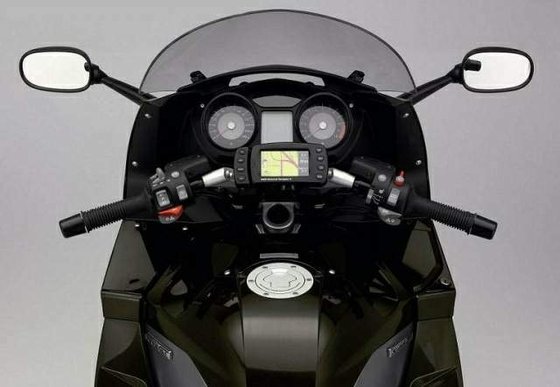
At the core of the K 1200 GT lies a 1,157 cc liquid-cooled inline-four that shares its DNA with the K 1200 S. This isn’t your typical lazy touring mill—it’s a high-strung powerhouse delivering 152 HP (112 kW) at 9,500 RPM and 130 Nm (96 lb-ft) of torque at 7,750 RPM. The numbers translate to real-world ferocity: - 0–100 km/h (0–62 mph): 3.5 seconds (faster than most sports cars of its era) - Top speed: 249 km/h (155 mph), though the sweet spot lives between 140–180 km/h (87–112 mph) - Overtaking punch: 60–140 km/h (37–87 mph) in 3.8 seconds via the buttery 6-speed transmission
What surprises most is the engine’s versatility. Below 4,000 RPM, it purrs like a commuter bike, making stop-and-go traffic manageable despite the 282 kg (622 lb) wet weight. Crack the throttle past 6,500 RPM, and the inline-four transforms into a snarling beast, pinning you to the seat as the shaft-driven rear tire digs for traction. Fuel injection (BMS-K system) delivers flawless throttle response, though urban riding reveals a slight snatchiness at parking-lot speeds.
Handling & Braking: Confidence at Any Lean Angle 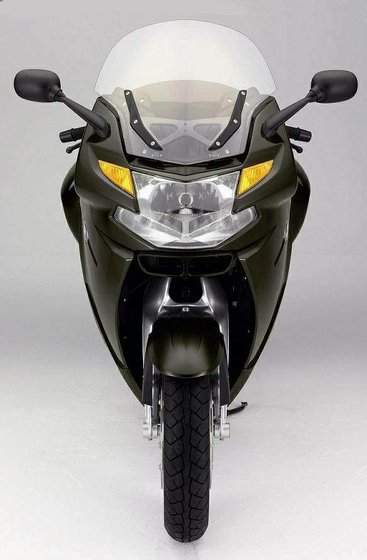
BMW’s chassis innovations elevate the GT beyond its weight class: - Front suspension: The radical Duolever system replaces traditional forks with a parallelogram setup. Benefits? Near-zero dive under braking and laser-guided precision mid-corner. - Rear suspension: Paralever single-sided swingarm maintains constant driveline geometry, eliminating the “shaft jacking” that plagues lesser shaft-drive bikes. - Frame: Aluminum bridge-type design keeps torsional rigidity high while saving weight.
Push the GT through switchbacks, and it responds with unexpected agility. The 1570 mm (61.8 in) wheelbase provides stability at speed, but the bike flicks side-to-side like a lighter machine once you commit to the bars. Ground clearance is generous, though the hero blobs will eventually protest on track days.
Braking: Safety First, Performance Always
Dual 320 mm front discs gripped by 4-piston calipers (with optional Integral ABS) deliver fade-free stopping power. The system isn’t as sensitive as modern cornering ABS, but it inspires confidence when hauling down from autobahn speeds. Rear braking feels wooden compared to the front—a common touring bike trait—but combined use anchors the GT predictably.
Comfort & Features: Touring Tech Ahead of Its Time 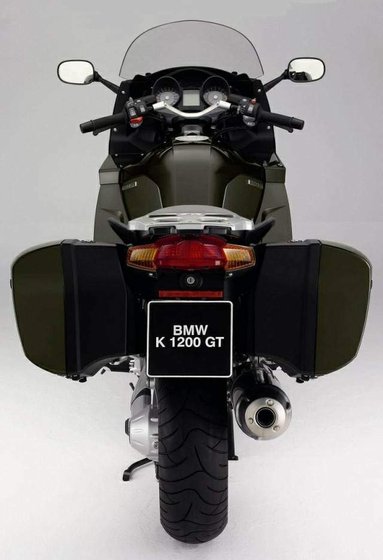
BMW packed the K 1200 GT with gadgets that still impress today: - Electronically Adjustable Suspension (ESA): Optional system lets riders tweak damping on-the-fly between Comfort, Normal, and Sport. - On-board computer: Monitors fuel range, oil level, tire pressure, and even brake pad wear. - Xenon headlights: A rarity in 2006, these illuminate dark mountain passes like daylight. - Cruise control: Lifesaver on monotonous highways.
Wind protection is class-leading, with the adjustable screen creating a still-air bubble for riders under 185 cm (6’1”). Heated grips (optional) and seats extend the riding season, though the stock seat’s foam firms up after 300 km (186 mi). Consider an aftermarket cushion for iron-butt adventures.
Competition: How the GT Stacks Up 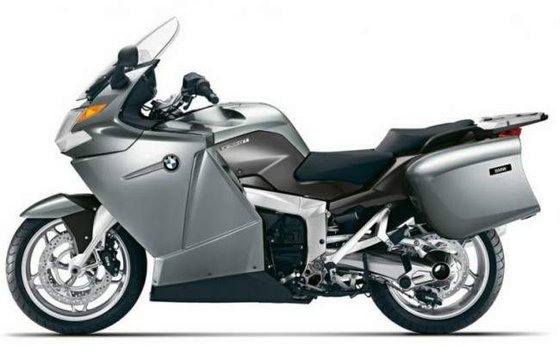
In the mid-2000s sport-touring arena, the BMW faced fierce rivals:
| Model | Engine | Power | Weight | Key Features | |--------------------|--------------------|--------|---------|---------------------------------------| | BMW K 1200 GT | 1,157cc I4 | 152 HP | 282 kg | Duolever, ESA, Shaft Drive | | Honda ST1300 | 1,261cc V4 | 125 HP | 289 kg | V4 smoothness, Linked Braking | | Yamaha FJR1300 | 1,298cc I4 | 145 HP | 291 kg | YCC-S throttle, Aggressive styling | | Kawasaki Concours 14| 1,352cc I4 | 155 HP | 304 kg | Radial brakes, Sportier ergonomics |
The GT’s Edge: While down on displacement to the Japanese rivals, its power-to-weight ratio (0.61 HP/kg) and innovative suspension give it sharper handling. The shaft drive eliminates chain maintenance—a boon for globe-trotters. However, the Honda and Yamaha counter with smoother low-RNV (Rider Noise Vibration) engines for all-day serenity.
Maintenance: Keeping the Bavarian Beast Roaring 
The K 1200 GT rewards diligent owners. Key considerations: - Oil changes: Every 10,000 km (6,200 mi) using 5W-40 synthetic (3.5L with filter). Watch for minor leaks from the timing cover—a known issue. - Shaft drive: Replace final drive oil every 20,000 km (12,400 mi) with 75W-140 GL-5 (180 ml). - Valve checks: Every 40,000 km (24,850 mi). Shims under buckets add labor time—budget accordingly. - Tires: Stick to recommended pressures (2.5 bar/36 psi front, 2.9 bar/42 psi rear). Overinflation ruins the plush ride. - Brake fluid: Flush every 2 years with DOT 4. Sticky calipers? Upgrade to stainless pistons.
Common upgrades from MOTOPARTS.store: - High-performance air filters to unlock hidden midrange - Aftermarket windscreens for taller riders - Upgraded brake pads for track-day enthusiasts
Final Verdict: The Tourer That Never Ages
The 2006–2008 K 1200 GT isn’t just a motorcycle—it’s a statement. It dares you to ride 500 km (310 mi) before breakfast, carve canyon roads at lunch, and arrive at dinner looking fresh enough for a Michelin-starred meal. While newer bikes boast flashier tech, the GT’s blend of mechanical artistry and touring comfort remains unmatched. For riders who view every journey as an event, this BMW isn’t just transportation—it’s the main attraction.
Specifications sheet
| Engine | |
|---|---|
| Stroke: | Four-stroke |
| Max power: | 112 kW | 150.0 hp |
| Max torque: | 130 Nm |
| Fuel system: | Electronic fuel injection (BMSK) |
| Max power @: | 9500 rpm |
| Displacement: | 1157 ccm |
| Max torque @: | 7750 rpm |
| Bore x stroke: | 79.0 x 59.0 mm (3.1 x 2.3 in) |
| Configuration: | Inline |
| Cooling system: | Liquid |
| Compression ratio: | 13.0:1 |
| Number of cylinders: | 4 |
| Dimensions | |
|---|---|
| Wheelbase: | 1570 mm (61.8 in) |
| Dry weight: | 249 |
| Wet weight: | 282 |
| Seat height: | 820-840 mm (32.3-33.1 in) adjustable |
| Overall length: | 2318 mm (91.3 in) |
| Ground clearance: | Not specified |
| Fuel tank capacity: | 24 L (6.3 US gal) |
| Drivetrain | |
|---|---|
| Clutch: | Hydraulic multi-disc wet clutch |
| Final drive: | shaft |
| Gear ratios: | 1st 2.045, 2nd 1.600, 3rd 1.267, 4th 1.038, 5th 0.900, 6th 0.820 |
| Transmission: | 6-speed, shaft drive |
| Maintenance | |
|---|---|
| Engine oil: | 5W40 |
| Brake fluid: | DOT 4 |
| Spark plugs: | NGK KR9CI |
| Spark plug gap: | 0.8 |
| Final drive oil: | 180 ml 75W-140 GL-5 |
| Coolant capacity: | 2.55 |
| Engine oil capacity: | 3.5 |
| Engine oil change interval: | Not specified (recommended every 5000-7000 km based on BMW standards) |
| Valve clearance (intake, cold): | 0.10–0.20 mm |
| Valve clearance check interval: | 24,000 km (15,000 mi) |
| Valve clearance (exhaust, cold): | 0.20–0.30 mm |
| Recommended tire pressure (rear): | 2.9 bar (42 psi) |
| Recommended tire pressure (front): | 2.5 bar (36 psi) |
| Additional Features | |
|---|---|
| Color options: | Deep Blue Metallic, Dark Graphite Metallic, Crystal Gray Metallic |
| Standard equipment: | ABS, heated grips (optional), xenon lights (optional), on-board computer, adjustable handlebars, cruise control (optional) |
| Chassis and Suspension | |
|---|---|
| Frame: | Composite aluminum bridge-type frame |
| Rear tire: | 180/55 z-17 |
| Front tire: | 120/70 z-17 |
| Rear brakes: | 294 mm disc, 2-piston caliper (ABS standard) |
| Front brakes: | 2 x 320 mm discs, 4-piston calipers (ABS standard) |
| Rear suspension: | BMW Paralever single-sided swing arm |
| Front suspension: | BMW Duolever |
| Rear wheel travel: | 135 mm (5.3 in) |
| Front wheel travel: | 115 mm (4.5 in) |



